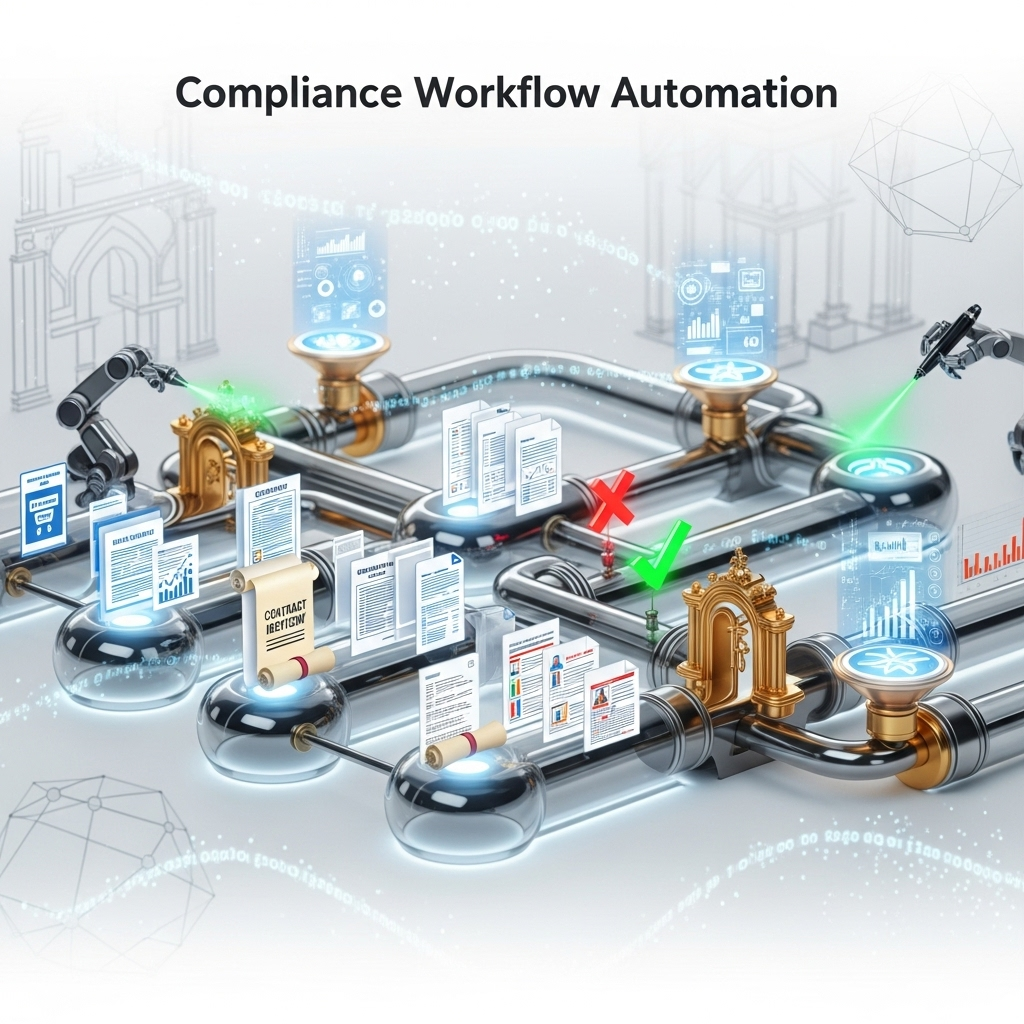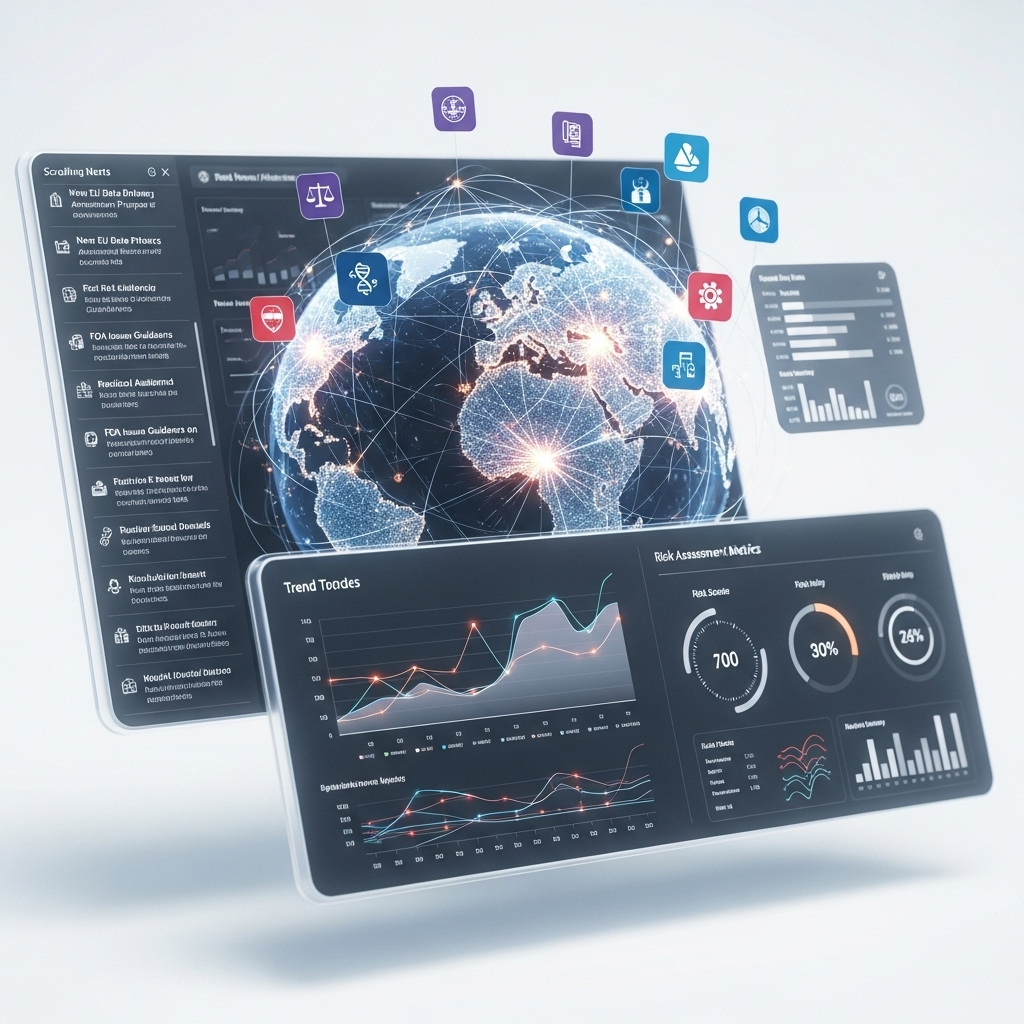Transform compliance operations through AI-powered workflow automation, intelligent task management, and adaptive process optimization

Traditional compliance workflows are characterized by rigid processes, manual handoffs, and significant inefficiencies that create bottlenecks, increase risk exposure, and consume valuable organizational resources. The Intelligent Compliance Workflow Orchestration Agent represents a fundamental transformation in how compliance processes are designed, executed, and optimized. This sophisticated agentic system goes beyond simple automation to create dynamic, adaptive workflows that learn from every execution, optimize resource allocation in real-time, and ensure seamless coordination between all compliance activities.
In the modern regulatory environment, compliance operations involve hundreds of interconnected processes, each with its own requirements, timelines, and stakeholders. Managing this complexity manually is not only inefficient but also prone to errors that can result in compliance violations and regulatory penalties. The Intelligent Workflow Orchestration Agent addresses these challenges through advanced AI capabilities that understand process dependencies, optimize resource allocation, and ensure nothing falls through the cracks.
Adaptive Intelligence: The system continuously learns from workflow executions, identifying optimization opportunities and implementing improvements automatically.
Dynamic Resource Allocation: Real-time assessment of resource availability and optimal task assignment based on skills, workload, and performance history.
Predictive Process Management: Anticipation of bottlenecks, delays, and resource conflicts before they impact compliance operations.
Seamless Integration: Native integration with existing compliance systems, creating unified workflow experiences across all platforms.
The Workflow Orchestration Agent employs advanced machine learning algorithms to analyze existing compliance processes and identify optimization opportunities. Unlike traditional workflow systems that require manual process design and configuration, this intelligent agent automatically discovers process patterns, identifies inefficiencies, and recommends improvements based on industry best practices and organizational requirements.

The agent begins by analyzing existing compliance activities to understand current workflows, identify process variations, and map stakeholder interactions. This analysis provides a comprehensive baseline of compliance operations that serves as the foundation for optimization efforts.
The process discovery capabilities include:
Based on the process discovery analysis, the agent continuously optimizes workflow designs to improve efficiency, reduce cycle times, and minimize resource requirements. This optimization is not a one-time event but an ongoing process that adapts to changing conditions, resource availability, and performance outcomes.
One of the most sophisticated capabilities of the Workflow Orchestration Agent is its ability to intelligently assign tasks to the most appropriate resources based on a comprehensive understanding of individual capabilities, current workload, performance history, and task requirements. This intelligent assignment system ensures optimal resource utilization while maintaining high quality standards and meeting compliance deadlines.

The agent maintains detailed profiles of all compliance team members, including their skills, experience levels, performance metrics, and current workload. This information is continuously updated based on task completions, quality assessments, and performance feedback to ensure accurate resource matching.
The resource assessment considers:
The agent continuously monitors workload distribution across the compliance team and automatically adjusts task assignments to prevent overload situations and ensure equitable resource utilization. This dynamic load balancing considers not only the quantity of work but also the complexity, urgency, and skill requirements of different tasks.
Key balancing strategies include:
Compliance operations require continuous testing and validation of controls to ensure their effectiveness and identify potential weaknesses before they result in violations. The Workflow Orchestration Agent revolutionizes control testing through intelligent, adaptive testing strategies that optimize testing frequency, depth, and coverage based on risk assessments and performance history.

The agent employs sophisticated risk assessment algorithms to determine optimal testing strategies for different controls and processes. This risk-based approach ensures that resources are focused on areas with the highest potential for compliance failures while maintaining appropriate coverage across all compliance requirements.
The risk-based testing approach includes:
Where possible, the agent automates the execution of control tests, reducing manual effort requirements while improving testing consistency and coverage. Automated testing capabilities include data extraction, analysis, exception identification, and preliminary assessment of control effectiveness.
Automated extraction and analysis of relevant data to assess control effectiveness and identify potential issues
Intelligent identification of anomalies and exceptions that require further investigation or remediation
Longitudinal analysis of control performance to identify deteriorating effectiveness or emerging risks
Prediction of potential control failures based on performance trends and risk factors
Compliance workflows inevitably encounter exceptions, issues, and situations requiring escalation to appropriate decision-makers. The Workflow Orchestration Agent includes sophisticated escalation management capabilities that ensure issues are routed to the right people at the right time with the right context and supporting information.
The agent maintains detailed understanding of organizational hierarchies, decision-making authority, and expertise areas to ensure that escalations are routed to the most appropriate individuals. This intelligent routing considers the nature of the issue, required expertise, availability of decision-makers, and organizational policies.
Escalation routing considerations include:
Beyond managing escalations after they occur, the agent employs predictive analytics to identify potential issues before they require escalation. This proactive approach enables prevention of problems rather than reactive management, reducing the overall burden on management and improving compliance outcomes.

The Workflow Orchestration Agent is designed as a learning system that continuously improves its performance through analysis of workflow outcomes, user feedback, and changing organizational needs. This continuous learning capability ensures that the system becomes increasingly valuable and effective over time.
The agent continuously analyzes workflow performance across multiple dimensions, identifying opportunities for improvement and implementing optimizations automatically where appropriate. This analysis includes cycle time reduction, quality improvement, resource utilization optimization, and stakeholder satisfaction enhancement.
Key performance metrics include:
As the agent learns from workflow executions and performance outcomes, it continuously evolves process designs to better meet organizational needs and changing requirements. This evolution is gradual and validated to ensure that changes improve rather than disrupt existing operations.
Evolution mechanisms include:
The Intelligent Compliance Workflow Orchestration Agent is designed for seamless integration with existing compliance technology infrastructure and organizational processes. Implementation can be phased to minimize disruption while maximizing benefits.
The agent integrates with existing compliance technology platforms through standard APIs and integration frameworks:
Implementation typically follows a phased approach that allows organizations to realize benefits quickly while minimizing disruption:
Organizations implementing Intelligent Compliance Workflow Orchestration typically experience significant improvements across multiple dimensions of compliance operations:
65-80% reduction in process cycle times through intelligent automation and optimization
85% reduction in process errors and rework through standardized, optimized workflows
40-60% improvement in resource utilization through intelligent task assignment and load balancing
70% reduction in compliance violations through improved process consistency and control effectiveness
The Intelligent Compliance Workflow Orchestration Agent continues to evolve with new capabilities and enhancements that expand its value and effectiveness. Future developments include enhanced predictive capabilities, expanded integration options, and more sophisticated optimization algorithms.
Organizations implementing workflow orchestration today position themselves for continued benefits as the technology evolves and expands. The learning capabilities of the system ensure that early adopters gain maximum advantage from their investment while building a foundation for future compliance excellence.
Transform your compliance operations with intelligent workflow orchestration. See how AI-powered process optimization can eliminate bottlenecks, reduce costs, and ensure seamless compliance execution.
Experience Workflow Intelligence